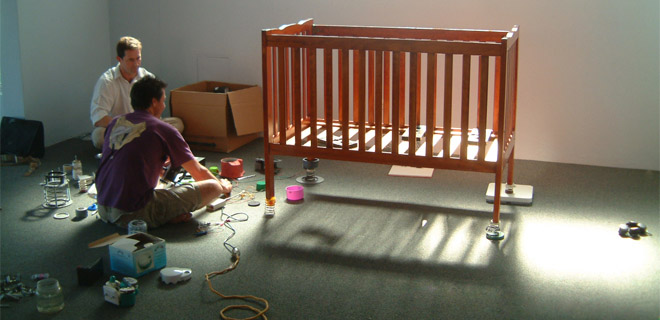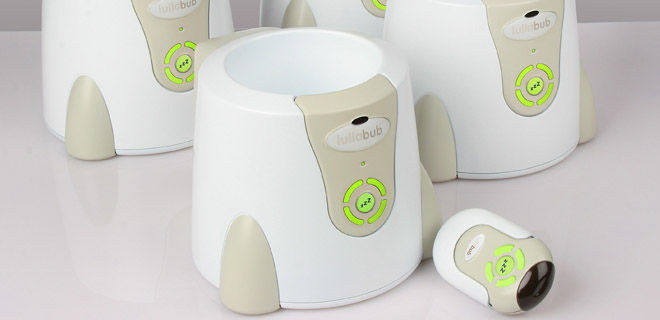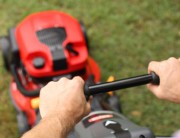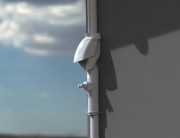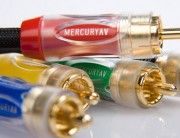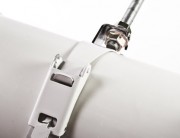lullabub
Cot rocker
What’s the price of a good night’s sleep?
“Exhausted and confused, we were desperate for sleep and were simply not sane. We argued all the time, it almost destroyed our relationship”. Any parent of any child will tell you that sleep deprivation is the biggest issue with very young children. When your child is a poor sleeper It affects everything. In the words of one mother we interviewed “…its a slow form of torture“.
Read More
A partnership for peace
Chris Mitchell did not own a product company; his company built homes. He approached us with a simple, very human problem; his child would not fall sleep unless driven around in a car. His next question you can probably guess – how do I bottle the car-driving magic and use it on demand at home to get my baby to sleep? We wanted to know that one too. Several of us had our own young screamers. Chris, like the rest of us, had an intense personal connection to the problem, but he also realised there was a much bigger opportunity if this need could be met. So – bring peace to our own families, and to a whole bunch of other families too? We were pretty excited.
How do people deal with sleepless babies?
The world of sleepless babies is a scary and confusing place. Why, oh why, won’t they just go to sleep? What are the causes? What are the effects? What solutions are out there? Simply put, how do people deal with babies who just won’t sleep?
So what did we learn? There is a colossal amount of information on this subject. Everyone has their own tricks, their own family secrets handed down through the generations. We explored everything from controlled crying to chiropractics. We carefully approached SIDS, which was a huge area in its own right. We performed research. We talked to parents, doctors and health care workers.
The proposed initial solution of simulating a drive in the car sounded promising. And boy does it work. But why does it work? How? We needed to understand it if we wanted to replicate it. We did try just having a car in the bedroom, but for some reason there wasn’t too many people who liked that option.
After much consternation we discovered the secret – low frequency vibration. Any source of low frequency vibration would help to put a baby to sleep. It is vibration, not sound that is most influential in lulling babies to sleep. Could it be that it was as simple as simulating the feeling of a mother’s heartbeat against a child’s face?
The secrets of a mother’s heart
Vibration, heartbeats. Got it. But how could we apply that feeling to a cot? How do we get a cot to vibrate and have it feel like a mother’s heartbeat? We needed a level of vibration that would be invisible to the human eye, with no perceptible movement. The only way you would feel the pulse of that heartbeat is when you rest your hand on the cot.
We played with all kinds of ideas; rotating weights, magnets and even clockwork mechanisms. We played with all kinds of improvised contraptions together in our search. Nothing worked well enough. We couldn’t find a silent solution – they all involved friction between moving parts. We were stuck.
Sometimes growing up building and making stuff helps. You develop a kind of mechanical intuition that helps you to overcome functional fixedness and look beyond the obvious usage of a thing. Or so we say – others might say dumb luck – but we’ll take it. It was a moment like this when we stumbled upon the idea of salvaging a solenoid from a door lock. We used that as an energy source, and combined it with a simple spring to distribute the pulse. No moving parts, low power, totally silent. Could it work?
Several weary but hopeful parents volunteered to test out our idea. We held our breath. We turned it on. It worked! The babies settled quickly. Eureka! That was quite an emotional moment for us all, and it gave us the confidence to move forward.
The devil is in the detail
We had a core technology solution. We hadn’t yet included the human element, so we didn’t yet have a product. We needed something that was easy to use, that looked right in a child’s bedroom, and that made sense in the context of the overall experience of trying to get a baby to sleep. We needed to design the technology to be right for people.
We started looking at features and aesthetics. Parents who volunteered for the trial were a valuable source of ideas and contributed enthusiastically. They wanted the ability to peek in the room without disrupting the baby. They wanted to be able to set the product, let it run and not have to monitor it – they figured they’d hear about it if it hadn’t worked. So we designed features like remote controls, night lights and timers into the experience.
To really nail the idea of a mother’s heartbeat, we focussed in on the specific rhythms required. It turns out the ideal range is between 60 and 90hz, which roughly corresponds with the vibration of being in a womb, of feeling your mother’s heart beat, of being in car, and of being in a boat. So they became our settings – womb, heartbeat, car, boat.
Looking for an aesthetic solution proved more difficult. This product was not driven by technology, but by the idea of giving parents back peace and control of their lives. The product had to be sympathetic with a child’s room but at the same time it could not be a toy or other children would find it too intriguing. Eventually we settled on using an elephant’s foot motif. The reference was well received by the parent group, because it had a strong emotional association with family, protection and also physical robustness. Importantly the motif also was gender neutral.
The product, now christened the ‘Lullabub’, had four modes of operation. Mother’s womb, Heartbeat, Car and Boat on the water.
Magically rocked back to sleep?
Chris was very excited about the huge potential of the business we’d helped him build. The initial run of 5000 products all sold out in the first 2 years. Pretty good for a side business.
But Chris would agree we were more excited about the human impact we had together. Since the real end-users we were all designing for are a little young to speak for themselves, we’ve had to satisfy ourselves with their spokespeople; the hoards of delighted, well-rested parents. When Chris when he started receiving emails like this from parents, we knew we’d done something great together.

